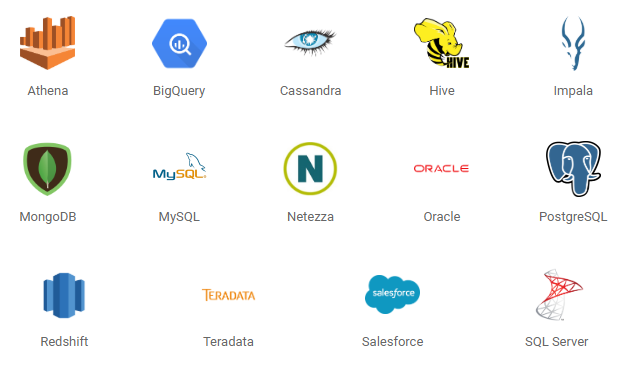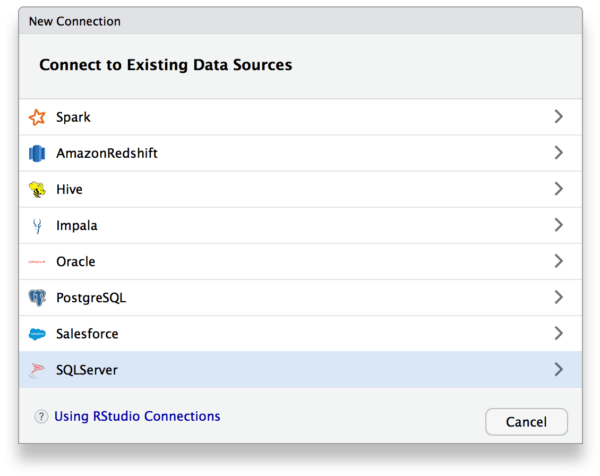Security#
Authentication#
RStudio Workbench works with your existing authentication service
-
PAM
- System user database
- Active Directory
- LDAP
-
Proxied Authentication
- Single sign-on
- Web based authentication
-
Google OAuth (note: this option still works but has been deprecated since Server Pro version 1.4)
PAM#
The most common authentication mode for RStudio Workbench is PAM (pluggable authentication module). You can configure PAM with LDAP or Active Directory.
-
LDAP
- Lightweight Directory Access Protocol
- Industry standard directory service
-
Active Directory
- Directory service for Windows
- Leverages LDAP and Kerberos
Note
- Your organization most likely already have a PAM configuration.
- This session has exercises for configuring RStudio Workbench using PAM with LDAP.
Proxied authentication#
If you are not using PAM, LDAP or Active Directory, you should use Proxied Auth.
-
In proxied auth mode, RStudio Workbench trusts the users sent by your existing authentication system (e.g. Shibboleth).
-
Configure your authentication system to add a special HTTP header for requests sent to RStudio Workbench.
-
Take precautions to prevent unauthorized traffic from accessing RStudio Workbench.
- This will be defined by your firewall and VPC (virtual private cloud) settings.
Token based authentication (SAML)#
RStudio Workbench does not natively support token based auth today. However, we intend to support SAML for many of these auth providers in the future:
Cloud based:
- Okta, Azure AD, Duo, Centrify, Google Apps
On premises:
- ADFS, PingIdentity, WSO2, Shibboleth, Auth0, Sailpoint
Kerberos#
Kerberos is a protocol that uses tickets to communicate over a network. It uses secret-key cryptography to provide secure communications over a non-secure network.
The benefits of Kerberos are:
- strong encryption
- single sign-on (SSO)
With Kerberos single sign-on, users are only prompted once for their user ID and password.
Fun fact
Kerberos is name after the mythological three-headed dog, Cerberus, who guarded the gates of Hades
 Painting of Cerberus, by Blake
Painting of Cerberus, by Blake
Kerberos tickets#
Ticket creation
- Kerberos tickets can be created at time of authentication.
- These are sometimes referred to as pass-through credentials.
Database authentication
- Kerberos is frequently used by an application to authenticate users against a database.
- For example, Hadoop clusters often require the user to authenticate with a Kerberos ticket.
RStudio integration
- Use PAM to initialize and destroy Kerberos tickets
- Note: Kerberos tickets can not be auto-generated with proxied auth, but users can generate their own Kerberos tickets via the terminal
More information
For more information about Kerberos with RStudio, refer to the admin guide.
For database integration, see
- Run As the Logged-in User (Kerberos)
- This is part of the database best practises at db.rstudio.com
Also, read the support articles:
Local system accounts#
Every R user must have a local system accounts regardless of the authentication method you use.
- This requirement comes from R.
- Like many programming languages (Python, Scala, etc), R gives user direct access to the operating system on Linux servers.
R programmers can:
- Issue shell commands from the R console
- Access files and file mounts
- Download files from the Internet
- Run apps and authenticate as themselves to databases and other services
Provisioning local system accounts#
You must provision local accounts in one of two ways:
- You should set up local system accounts manually and then map authenticating users to these accounts.
- You can also use PAM Sessions to mount users' home directories to the server.
Note
Not all RStudio products require local system accounts. * RStudio Connect serves end users, not R developers, so it can be configured without local system accounts.
Security#
RStudio Team products run these open source tools:
- Linux
- R programming language
- Community R packages
RStudio Team products run on premises and in the cloud using:
- Complex networks and firewalls
- File shares and other storage
- Databases and other data stores
- Browser and other end user connections
This implies that many security issues pertain to these systems, not to RStudio!
Typical security concerns:
- How are local system accounts provisioned on the server?
- What permissions / privileges do those local system accounts have?
- How does the user authenticate using their browser?
- How to secure browser communications?
The next section dicusses security features of RStudio Workbench
RStudio Workbench Security features#
- Clickjacking
- Will not load inside a browser frame
- Cookies
- HTTP only cookies except for the CSRF cookie.
- SSL
- TLS v1, TLS v1.1, TLS v1.2
- SSL v2, SSL v3
- Secure Cookies
- HSTS Header
- Cross Site Request Forgery (CSRF):
- Protection with the R session includes a double submit cookie
Note: Also refer to the support article Security features in RStudio Workbench
SSL Certificates#
Transport layer security (TLS) is a mechanism to establish secure browser communications between a client (e.g. browser) and server (RStudio Workbench) over an insecure channel.
The technology to achieve this a combination of SSL, TLS, and HTTPS.
Having transport layer security:
- Keeps information secure
- Builds trust
- Best practice
To enable SSL, TLS and HTTPS requires a certificate.
You can create a certificate yourself, or obtain a certificate from a trusted authority.
-
Self-signed certificate
- Server generates its own certificate
- Easy to generate, but every client has to be configured manually
- Your server will not automatically be trusted by other clients
-
Certified authority
- Trusted authority generates certificate
- Configuration at the network level
- Your server will be trusted by all clients in your network
Your organisation most likely have a formal process for obtaining trusted certificates. Talk to your IT team to provide a certificate for your RStudio products.
Running behind a proxy#
RStudio Workbench is commonly run behind a reverse proxy.
From wikipedia:
A reverse proxy is a type of proxy server that retrieves resources on behalf of a client from one or more servers. These resources are then returned to the client, appearing as if they originated from the reverse proxy server itself
In other words, a reverse proxy taking requests from the Internet and forwarding them to servers in an internal network. Those making requests to the proxy may not be aware of the internal network. Thus the purpose of the reverse proxy is to provide a firewall between RStudio Workbench and other servers on the network.
RStudio does not provide the proxy software, but you can open source or commercial software to configure a proxy. For example:
For more information, see the support articles:
- Running RStudio Workbench with a Proxy
- Running (Connect) with a Proxy
- Running RStudio Package Manager behind a Proxy
Disabling access to some features#
You can selectively disable some features of RStudio Workbench. The feature limits section of the admin guide describes these limits.
For example, if your organisation operates a secure environment, you may want to limit:
- Shell access
- File uploads
- Publishing to the cloud
In addition, you can also limit:
- Git access
- Package installation
- Package repository selection
- WebSockets
- File downloads
(Note that you specify these settings in /etc/rstudio/rsession.conf.)
Why root access?#
- RStudio needs root access to provision sessions on behalf of other users
- The RStudio Workbench runs under the
rstudio-serveruser in the normal course of operations.
From the docs
RStudio Server runs as the system root user during startup and then drops this privilege and runs as a more restricted user. RStudio Server then re-assumes root privilege for a brief instant when creating R sessions on behalf of users (the server needs to call setresuid when creating the R session, and this call requires root privilege).
Security of open source software#
R is open source software with oversight by the R Foundation
- All versions of R are equally secure
- We recommend you install R from pre-compiled binaries
R packages (10,000+) are open source and community driven
- RStudio contributes only a small percentage of all packages
- Indemnification of R packages is very rare
- RStudio offers a package manager to help curate and manage packages
RStudio Database drivers#
There are many ways to access data with R. One of these mechanisms is to use ODBC to connect to databases from R.
The RStudio Pro database drivers supports some of the most common data sources:

Database best practises
To find recommended best practise for database connections, storing credentials, etc:
* Visit https://db.rstudio.com/

Your turn#
Next complete the exercise.
Signs of success:
- You have created a new user
jen - You can authenticate against sssd as
jen - You have logged in as
jenon RStudio Workbench